Auroras in Lapland
Blog topic:
Counter to my expectations, however, there turned out to be 5 nights with clear or partially clear skies, and in all of them I could see the auroral activity! Surprisingly, there is a finite probability to turn out lucky.
Having planned ahead, I came well equipped with my Nikon D90 and a tripod (Yes, pictures below). Now for a few sciencebits. (After all, I have to keep the site's reputation).
When I looked closely at the center of the pictures (at least in the original unscaled versions), I could see concentric rings. When I first saw them, I found them to be quite strange, but interesting nevertheless.
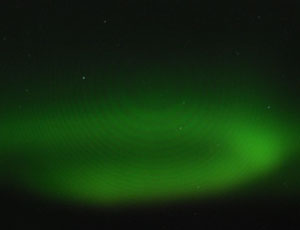
Concentric fringes over the aurora.
So, where does this interference pattern come from, and what can we learn from it?
The first thing to note, is that the fact that there is an interference pattern, implies that the light is monochromatic, or at least coming from a very narrow wave band. Since I can count at least 30 rings, the waveband should be no more than about 1/30 of the wavelength. Since green is about 5500Å, the emitted waveband has to be narrower than about 200Å. In fact, the radiation is monochromatic. It comes from a well known 5577Å forbidden line of Oxygen, namely, under lab conditions, they cannot be observed.
A forbidden line arises from a long lived atomic level. As a consequence, under normal lab conditions, the high density implies that collisional de-exitations of the line take place much faster than radiative transitions. However, high up in the atmosphere, at 100 kms, the density is much lower, and the lines can radiate photons instead of being collisionally de-excitated.
Thus, high energy electrons coming from the solar wind, are funneled along the terrestrial magnetic field, and when they reach typical altitudes of about 100 km, they excite the Oxygen in the atmosphere, and when the excited Oxygen decays, it radiates the monochromatic green color. In a sense, auroras are atmospheric "neon" lamps with a forbidden Oxygen line used instead.
What else can we learn from the rings? Well, given that it comes from the UV filter, we can now estimate the width of it!
The field of view of my 18-200 mm lens, at 18mm, is 76 degrees. The relative size of the 10th constructive interference fringe is 0.048 of the field of view, namely, the angle of the 10th fringe is 3.6 degrees. The 10th fringe is formed were the difference in path length between a ray perpendicular to the filter, and a ray at 3.6 degrees is 10 wavelengths. If the width of the filter is d, then The angle of the n-th fringe should be: $$ 10 \lambda = d- d\cos(3.6^\circ) $$ Thus, the width of the filter is about 3mm! I wonder how apparent would the fringes have been if I would have bought the more expensive HOYA filter and not the cheaper Tiffen one! Now take a look at the photos and enjoy.
Day 1: Aurora on the first night (16/3/2009, around 10pm). The picture was taken from the balcony of my hotel room (Riekonlinna hotel, Saariselkä). Almost all pictures here are 10 to 20 second exposures with a 3200 ISO setting on my Nikon D90 camera. The two lenses I used are a Nikon 18-200mm at 18mm and a Sigma 10-20 at 10mm. The 10mm pictures are noticeable with their often weird perspectives. The aurora was very low in the horizon, and didn't show too much activity.
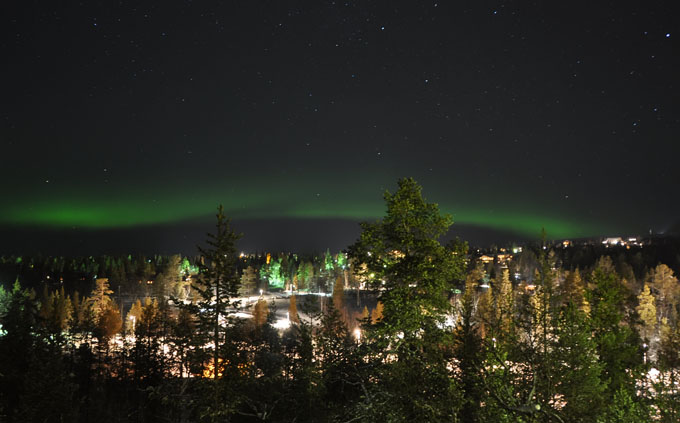
Picture from the first day. The aurora not very active, but nice and strong. Taken at 18mm.
Day 2: Aurora on the second night. At some point, there was very nice activity high above the horizon, but I didn't catch the peak activity! Only after it waned some did I manage to photograph it.
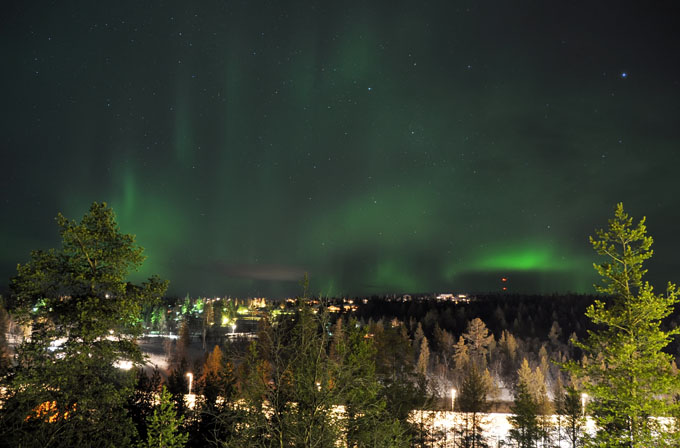
Past the prime activity but still very nice! Taken at 18mm.
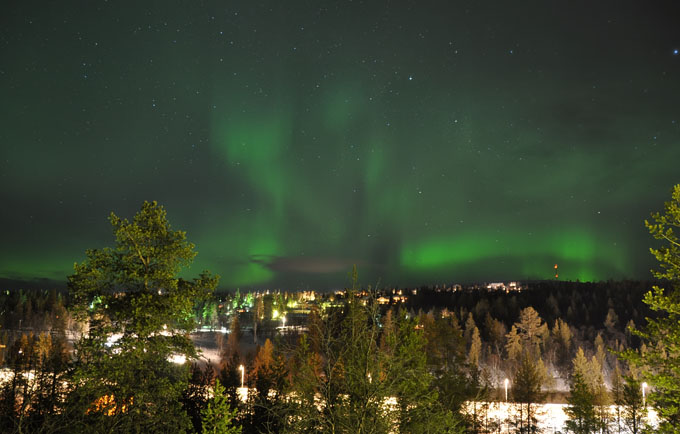 alt="Aurora in Saariselkä, lapland"
alt="Aurora in Saariselkä, lapland"
Similar to the previous picture.

Some brightening, but close to the horizon.
Day 3: Aurora on the third night. This time I took pictures with the Sigma at 10mm as well. The temperature was -18°C, when I found myself locked at the emergency fire exit (it had an excellent view to the North!). The aurora was not as impressive as the day before, and I almost froze to death. The good thing is that I realized the camera operates fine under lower temperatures than I would ever use again!
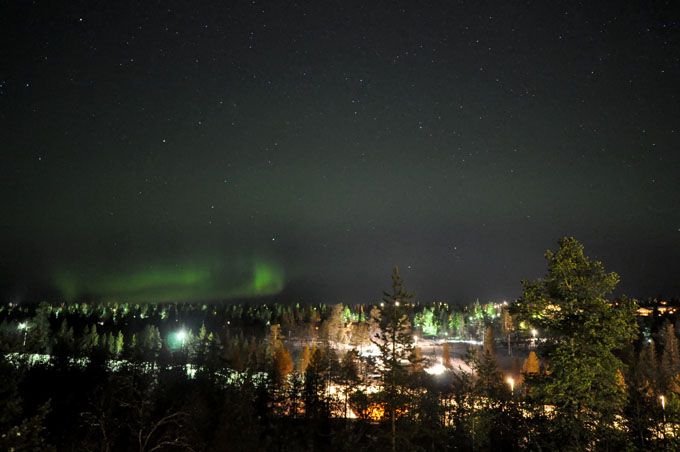
Picture from the third day. Nice activity close to the horizon. Taken at 18mm.
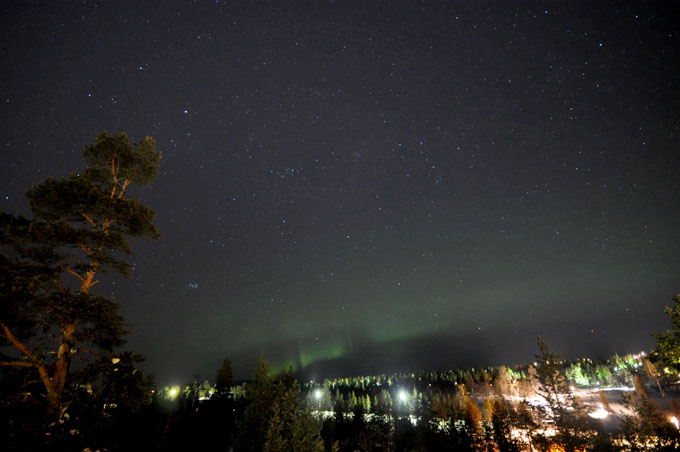
Taken with the Sigma lens at 10mm. The Pleiades's are apparent near the tree. The activity was low at this point, but the auroral oval can still be nicely seen.
Day 4: After one overcast day, the conference dinner took place on 20/3/2009, at a Sami cottage in the middle of the forest. At around 10 pm, the auroral activity became very impressive and reached an altitude of about 60 degrees above the horizon.
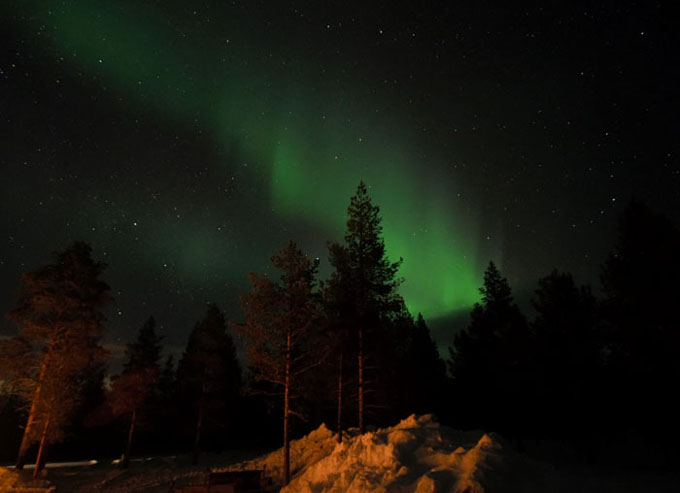
Taken at 10mm.
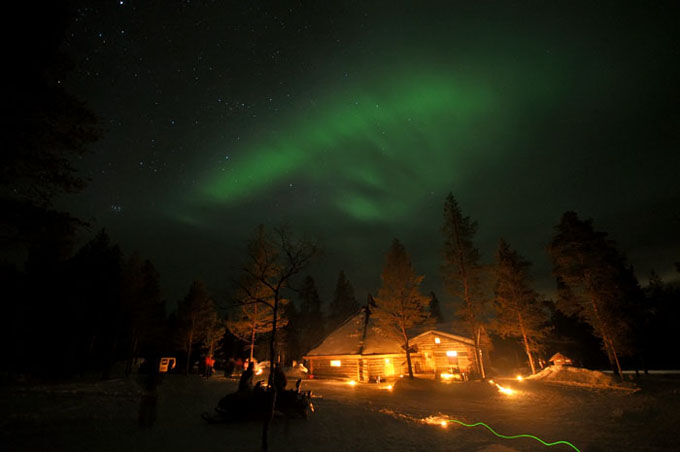
Taken at 10mm. Because of the long exposure, moving people are not captured. But if they hold a flashlight, their light is captured!
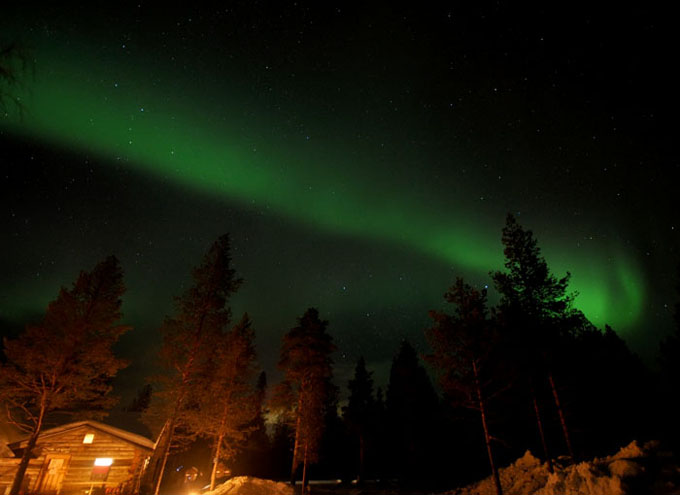
Taken at 10mm.
Day 5: On the last day in Saariselkä, it was partially cloudy. Nevertheless, the northern sky was at times clear, and yet again, a relatively inactive aurora could be seen. Later, when I was out (and without my camera), the auroral oval could be seen across the sky, passing overhead! The strange thing is that there was a snow flurry at the same time. I could see an aurora and snow fell onto my face. What a sight.
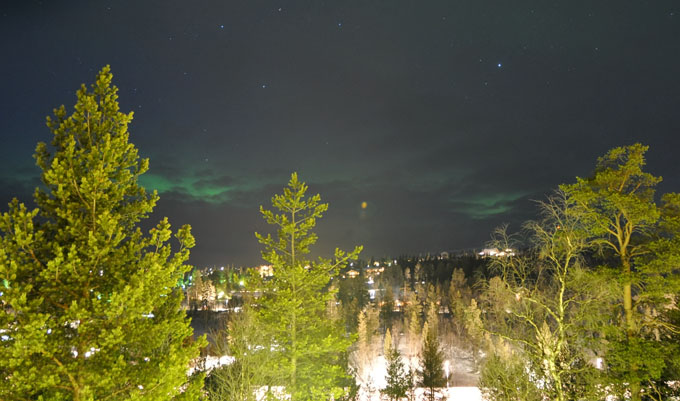
Auroral activity behind clouds.
With this trip, I more than doubled the number of auroras I have seen (previous count were 3 in Toronto and one on a transatlantic flight). However, only once (in Toronto) did I see an aurora with colors other than green. For that I'll have to wait for the next solar maximum.

Comments (4)
I live in Norway and have seen the aurora borealis many times and it is a breathtaking experience every time. Your science lesson to go with the pictures was cool. :D
Have a nice day. :)
Some people are lucky to live much nearer to the magnetic pole! But at least I don't have to shovel my home entrance all winter long ;-)
Excellent!
Beautiful pictures - at least for a comrade union boss. :-) Good luck, Luboš